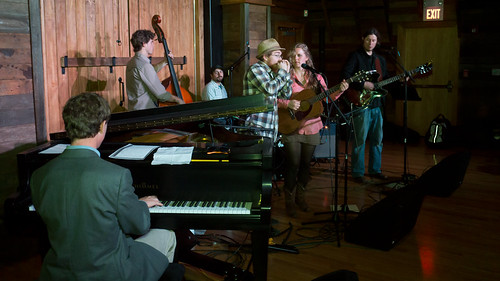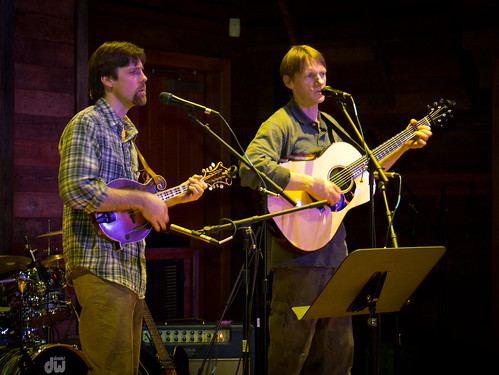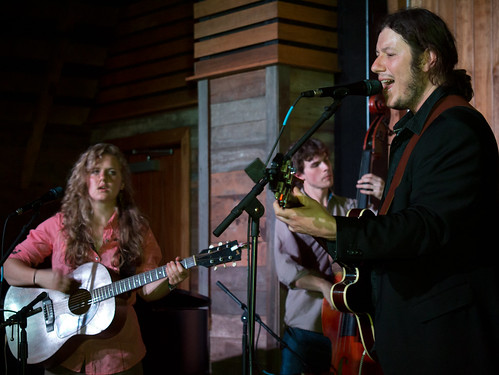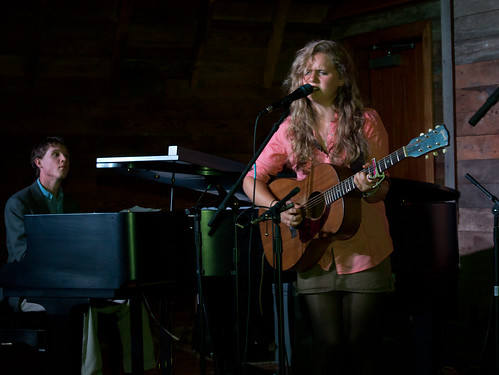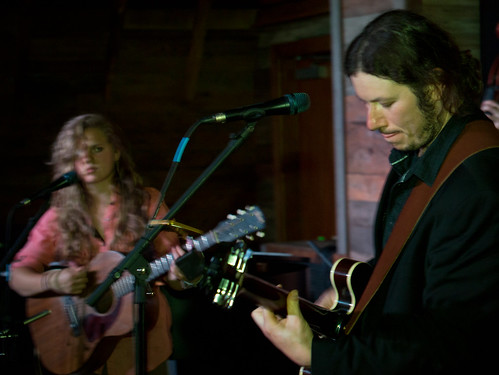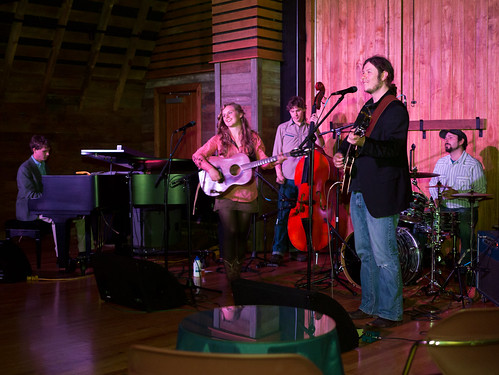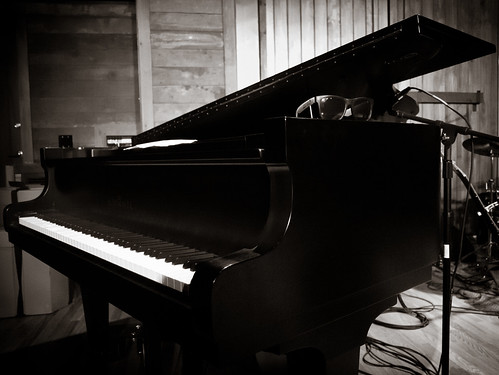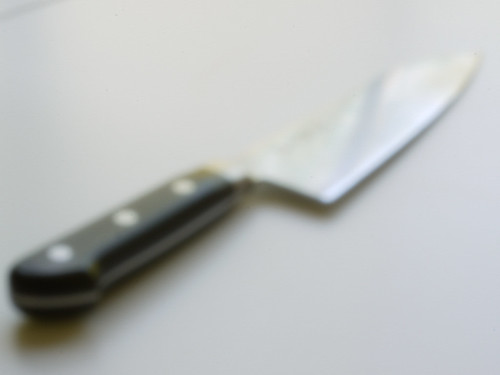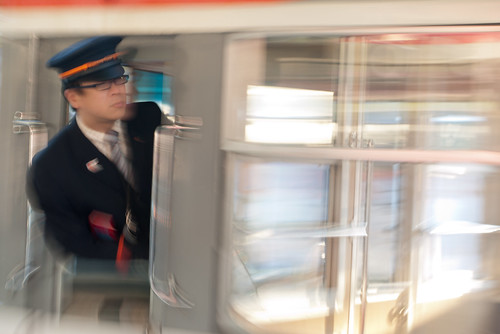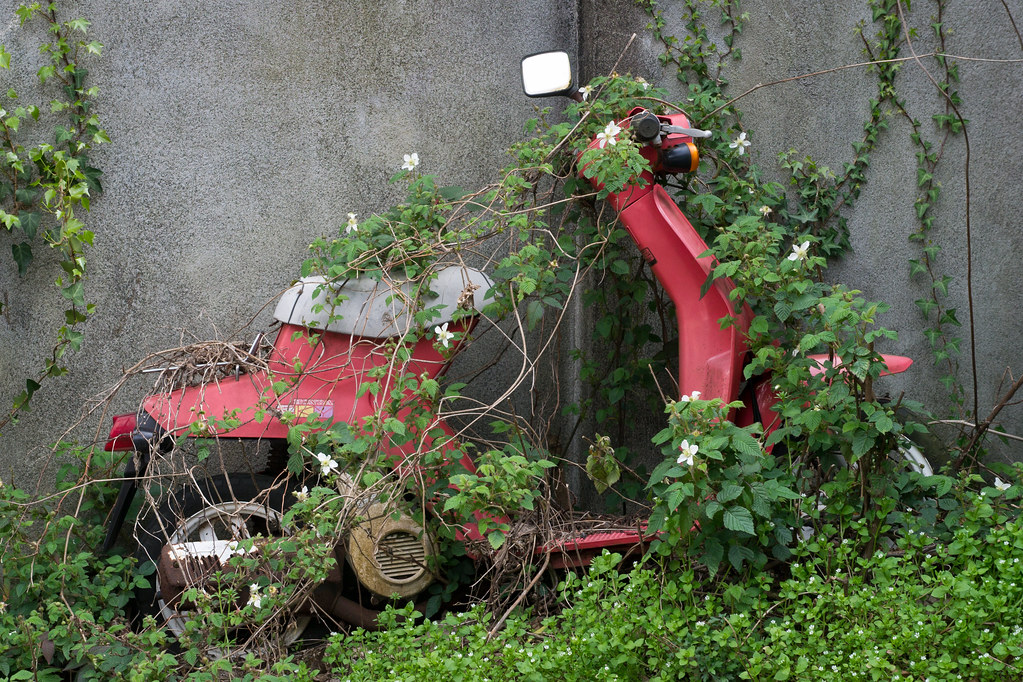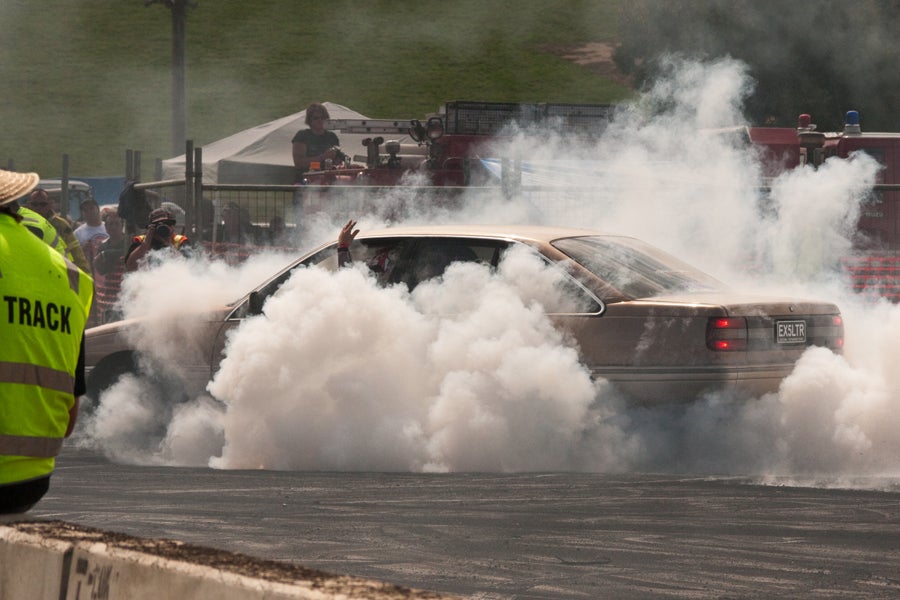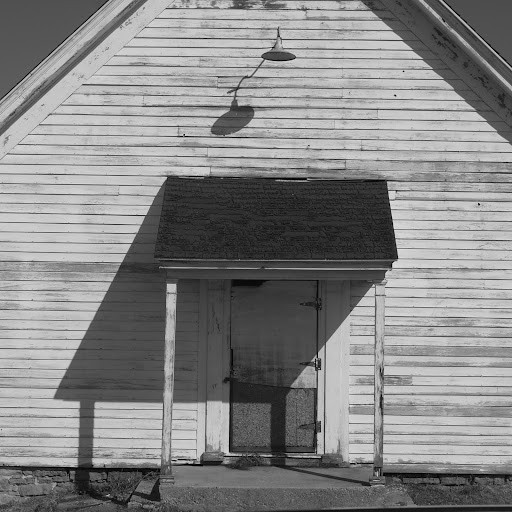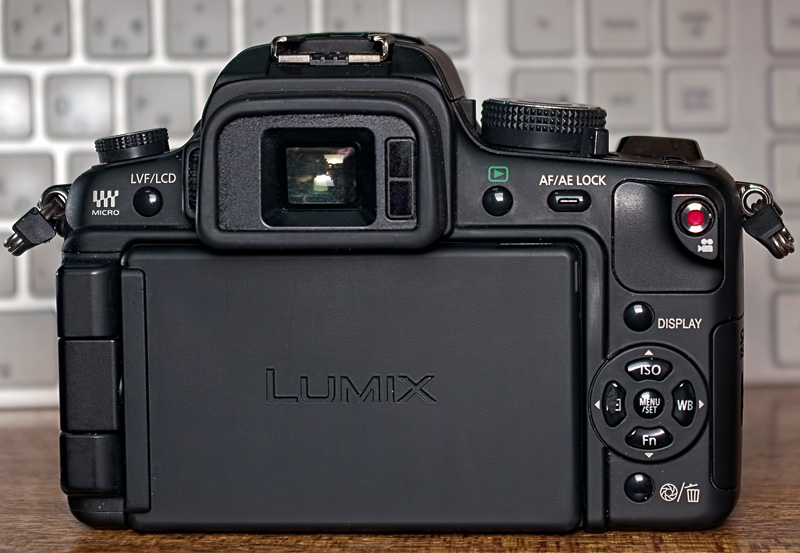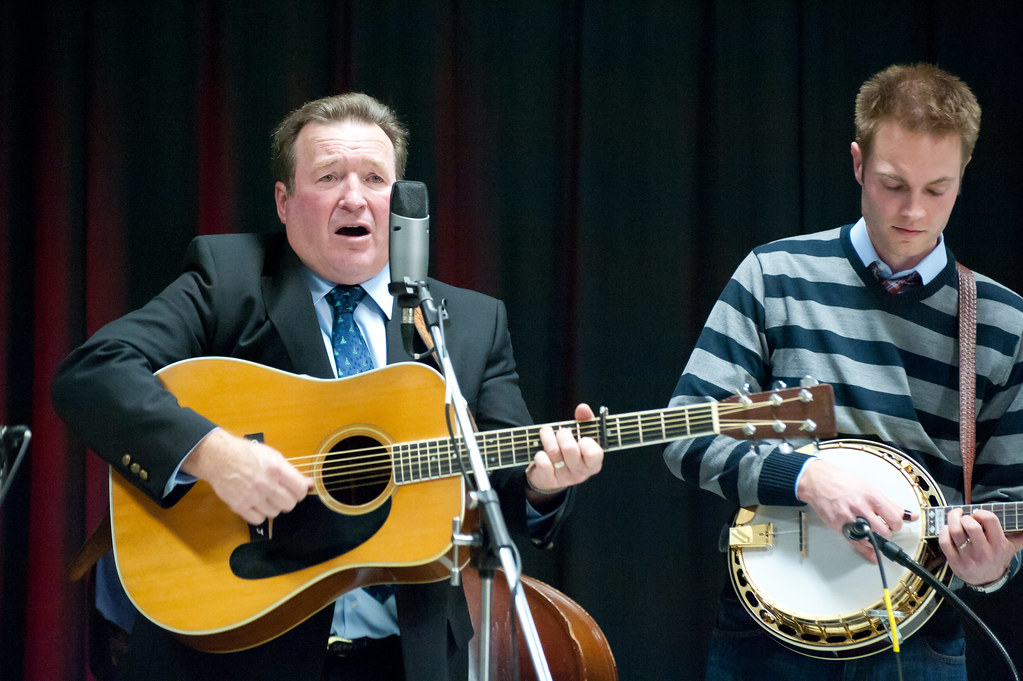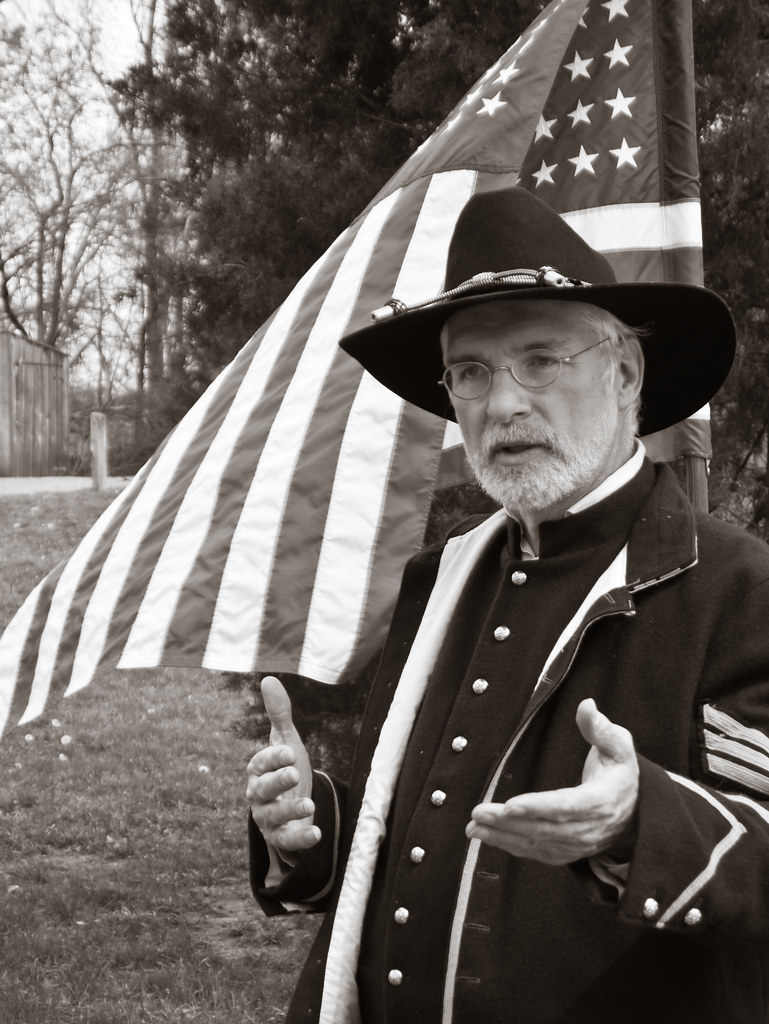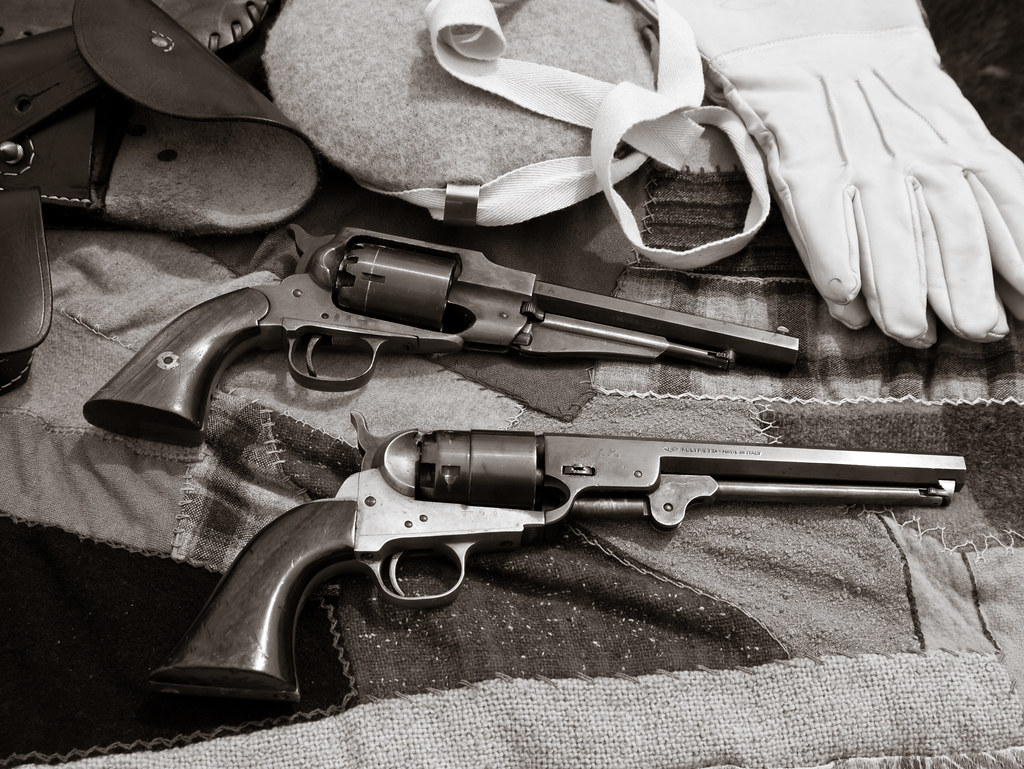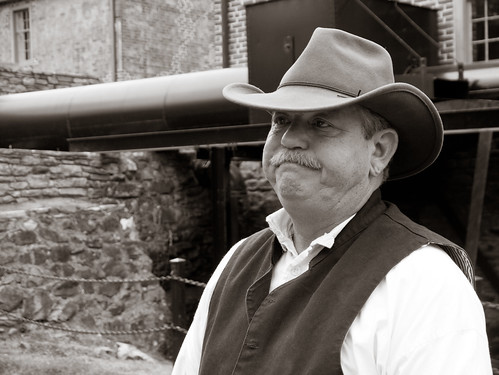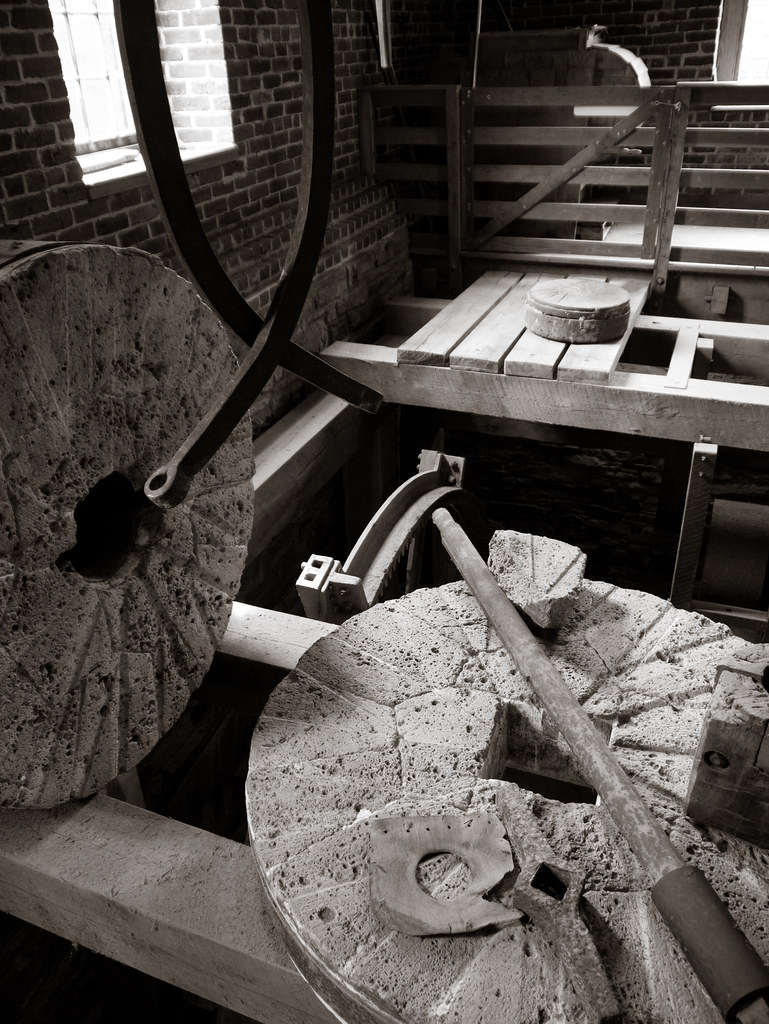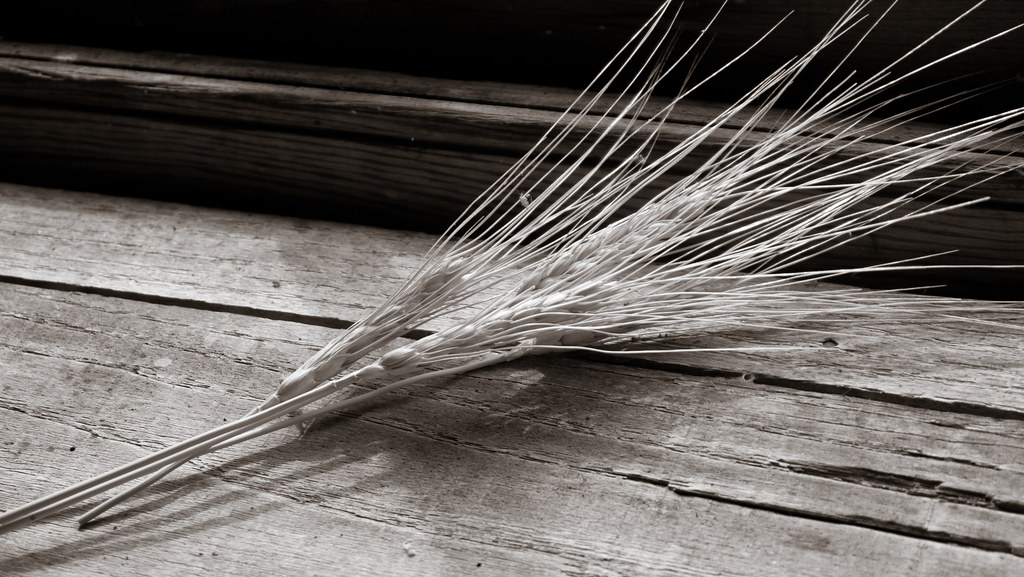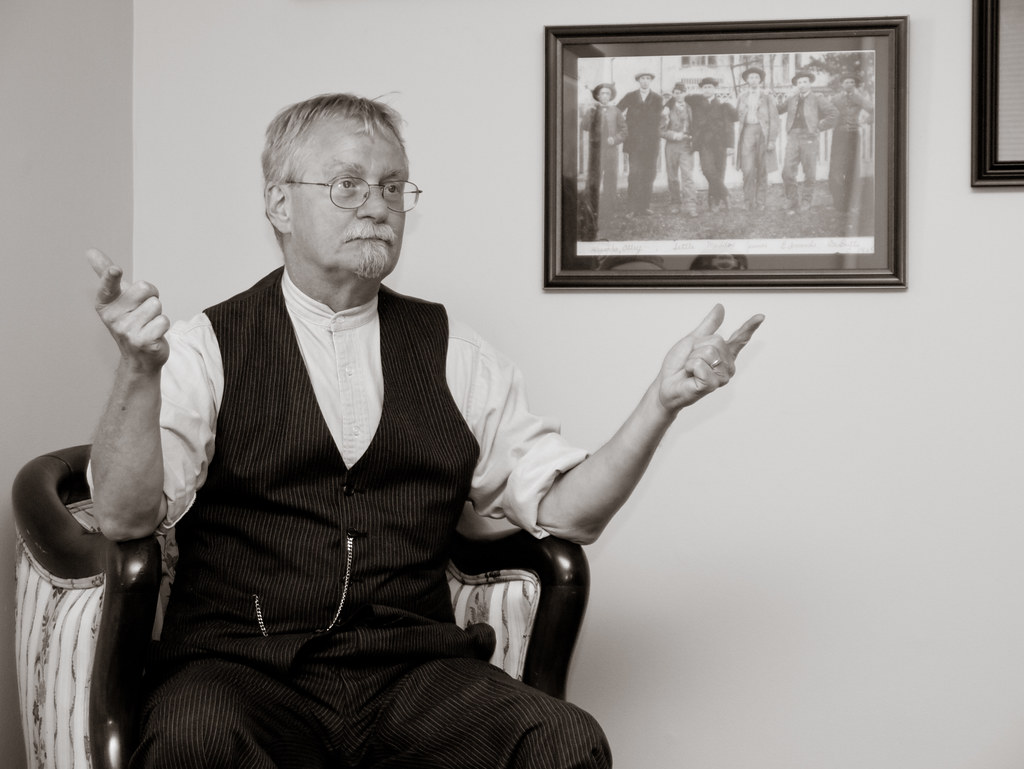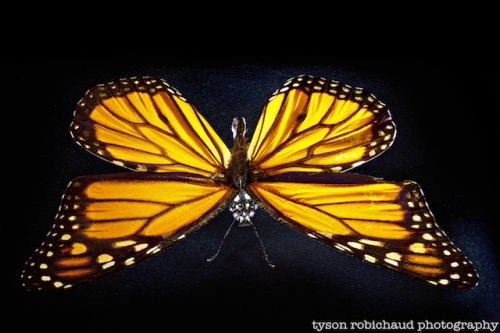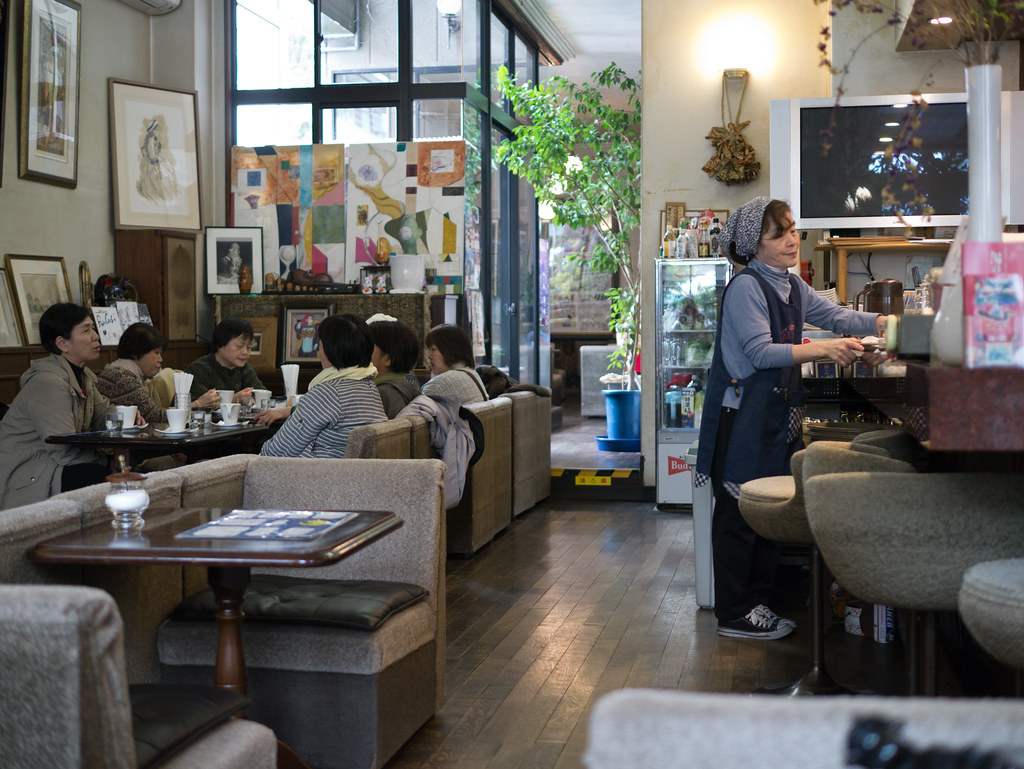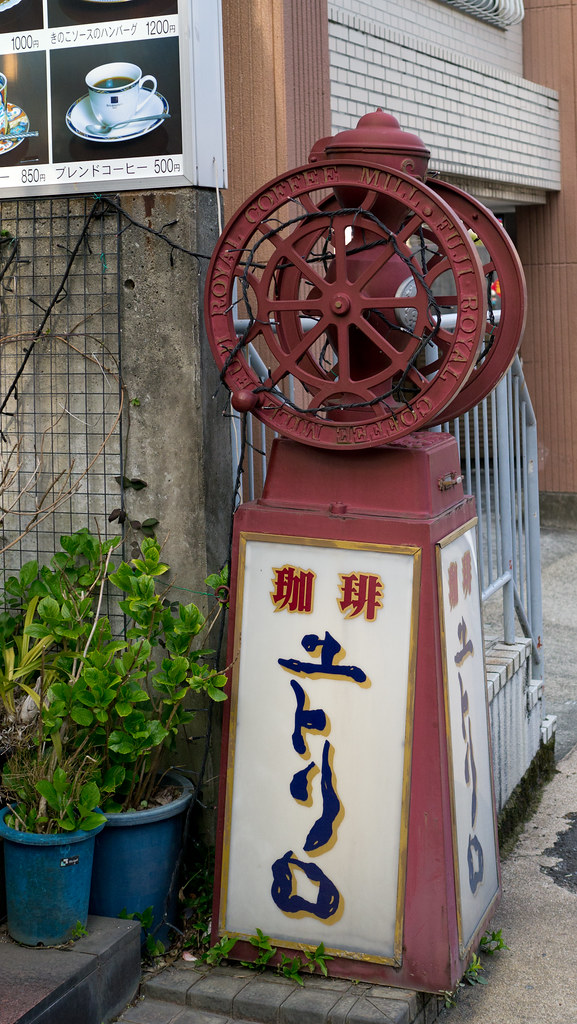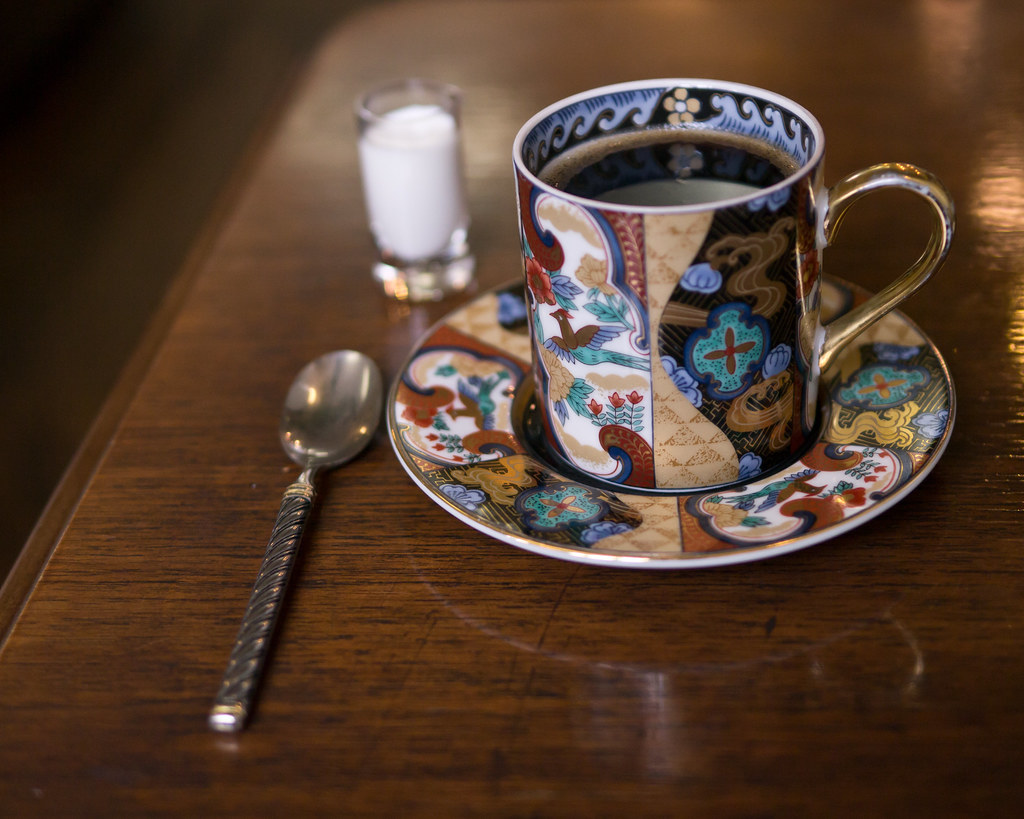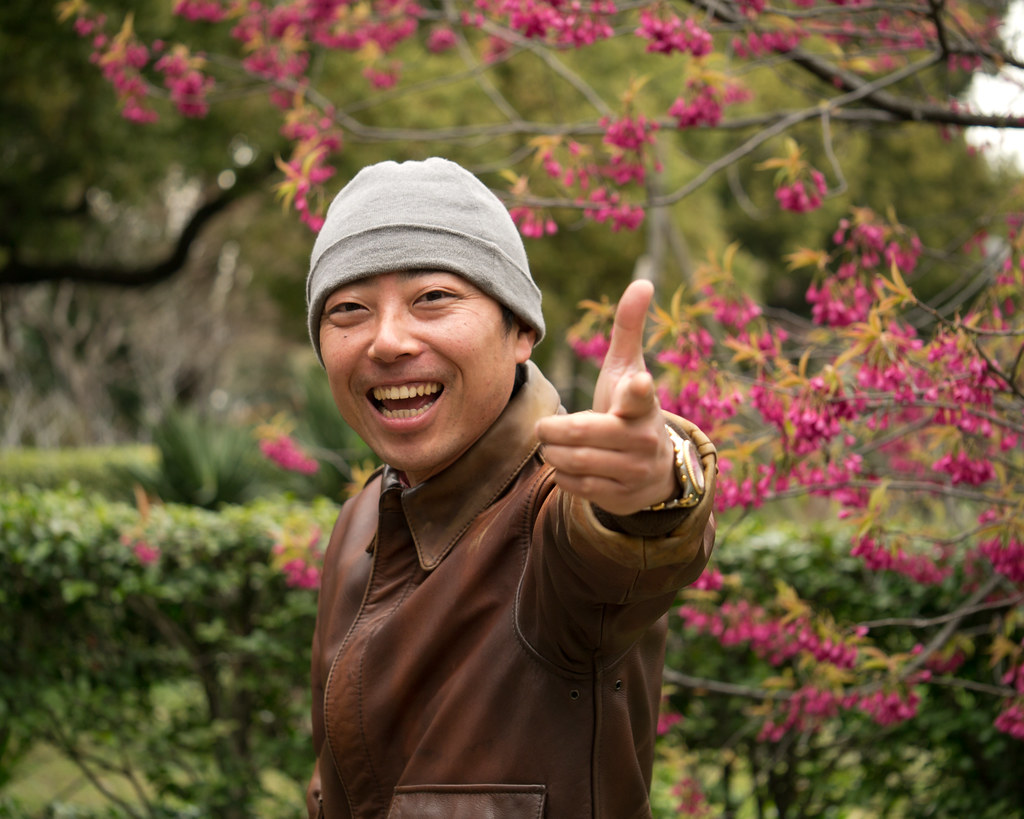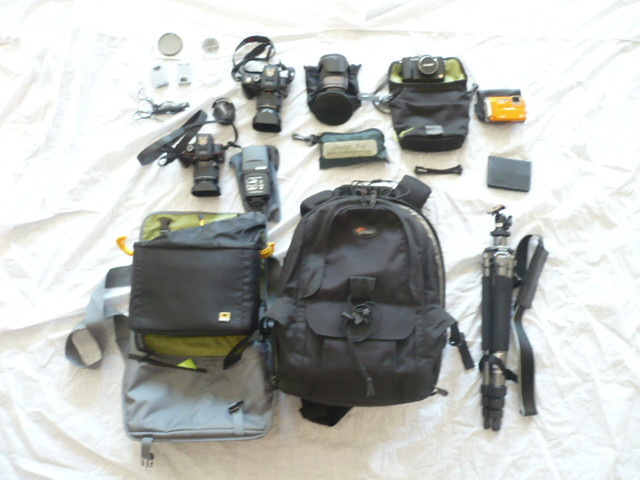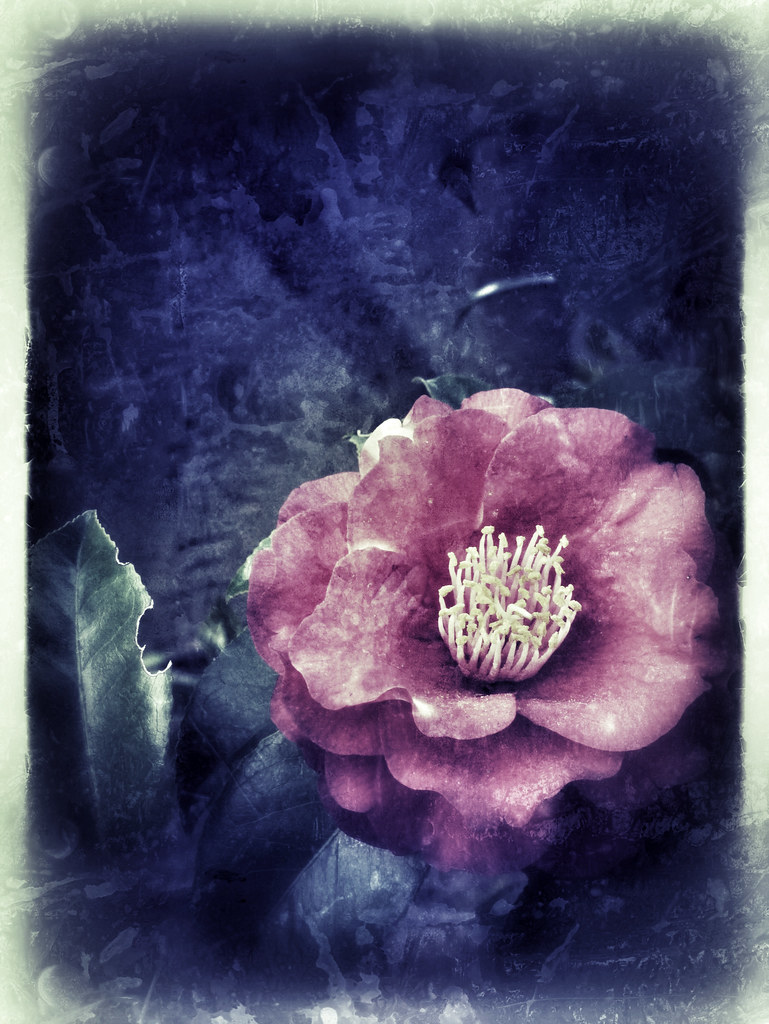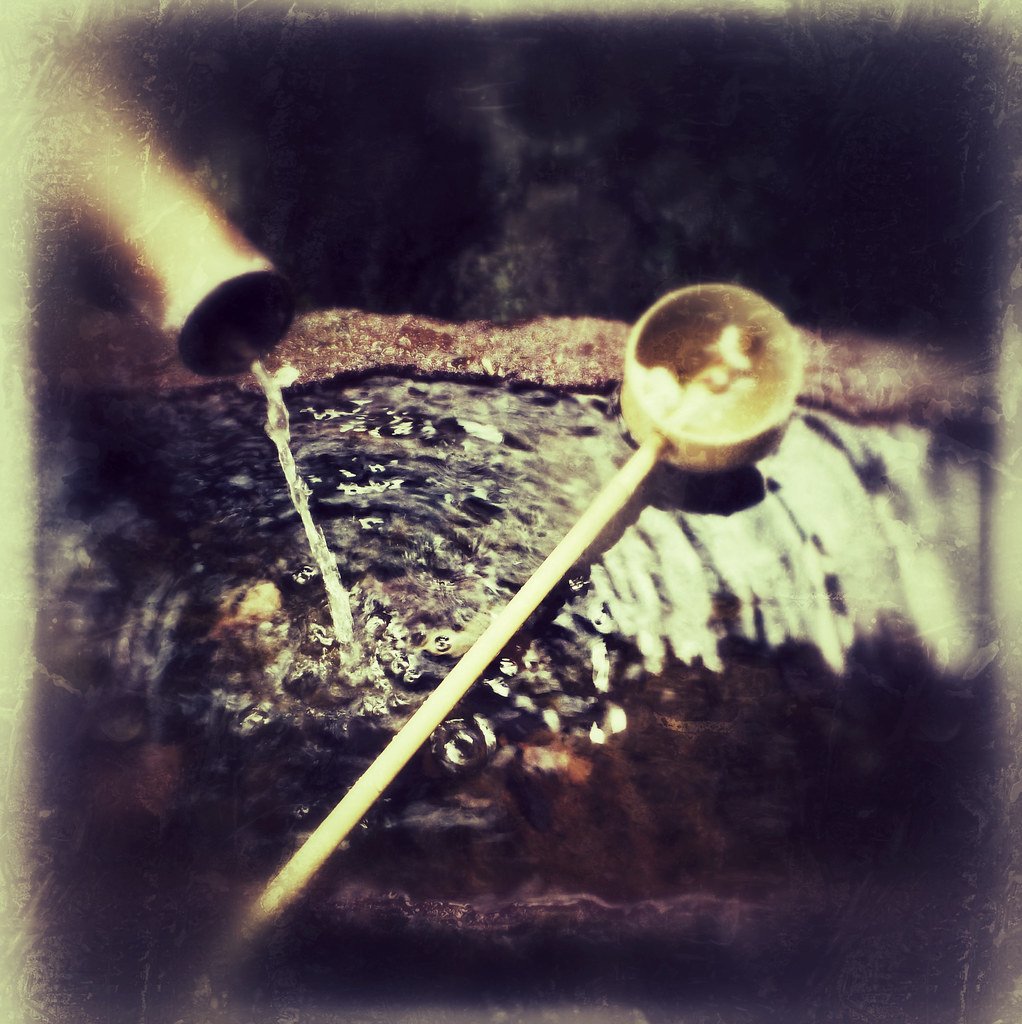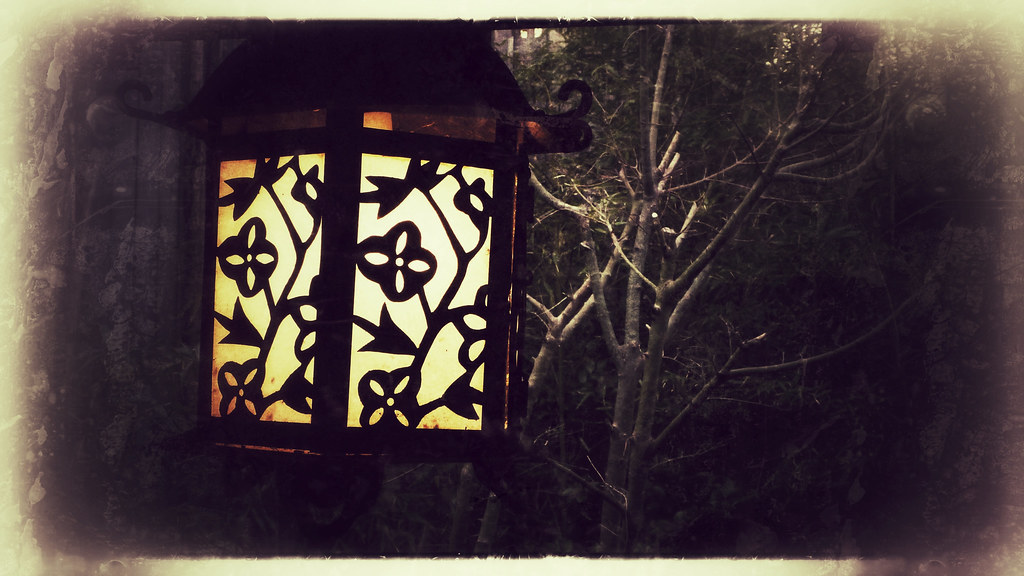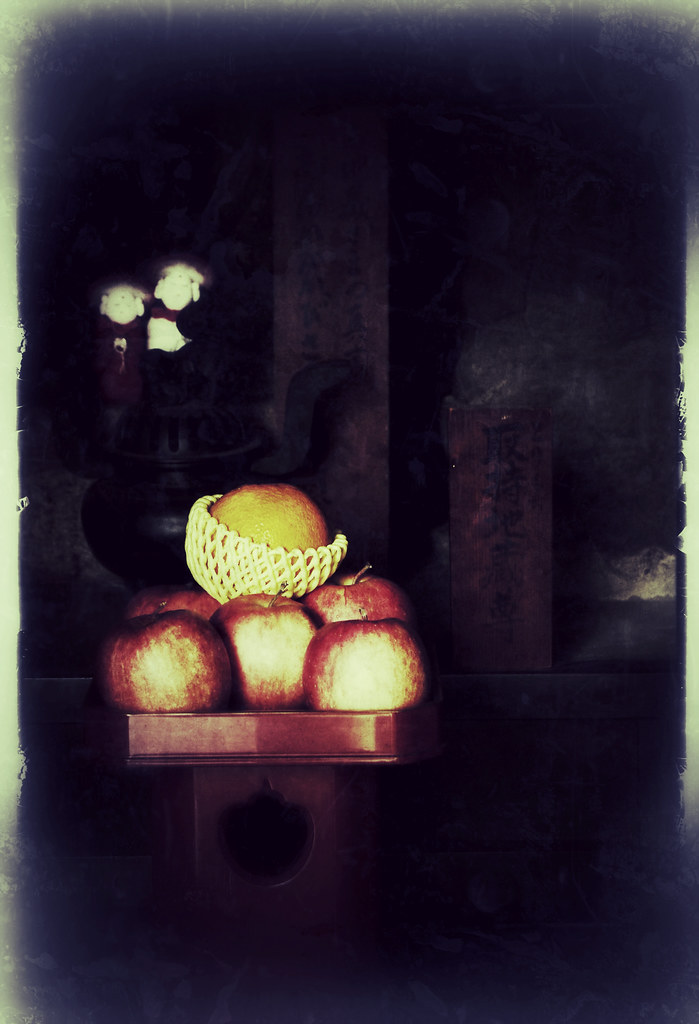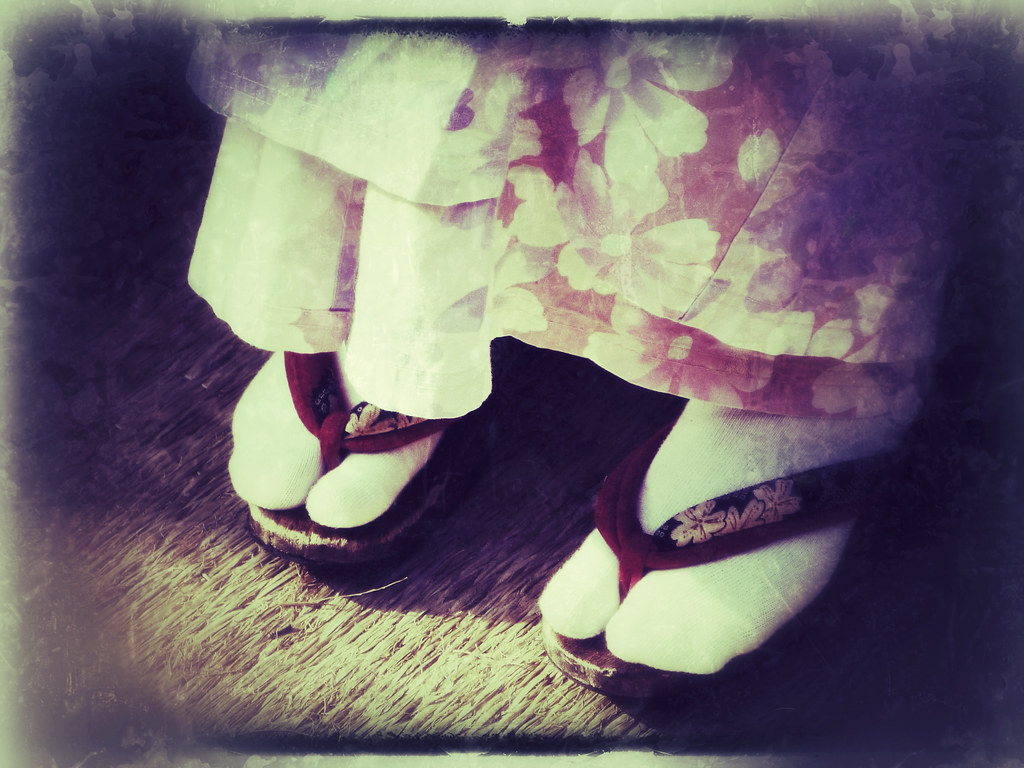Union Solder at Mount Zion Church, Aldie, Virginia, by Reed A. George
Panasonic Lumix DMC-G3, Lumix 14-42mm f3.5-5.6 Kit Zoom
iso160, f5.5, 1/400 sec
I recently attended a local civil war event with my good friend Stan. Stan happens to be an avid Nikon photographer, and a Historian.
We attended an event entitled "Mosby: A Scout Along the Turnpike," which included three distinct historical sites here in Northern Virginia. The first stop for us was at the historic Mount Zion Church in Aldie, where we received detailed descriptions from re-enactors (one playing John S. Mosby, the famous guerilla leader fighting for the confederacy in the area, and another playing a Union soldier, above). The church, built in 1851, at various times in the civil war served as the first rendezvous site for Mosby and his Rangers, a field hospital, a barracks, a prison, and an actual site of military action. Union troops convalescing in the church as field hospital left graffiti on the walls that remains today. Also at this first site was a nice display of period-style weapons, like those shown below.
Muzzle-loading Springfield Rifle, by Reed A. George
Panasonic Lumix DMC-G3, Lumix 14-42mm f3.5-5.6 Kit Zoom
iso160, f7.1, 1/500 sec
Colt and Remington-Style Pistols, by Reed A. George
Panasonic Lumix DMC-G3, Lumix 14-42mm f3.5-5.6 Kit Zoom
iso160, f7.1, 1/500 sec
The next stop on our tour was the Aldie Mill. The mill was owned and operated during the civil war by John Moore, who was genuinely against Virginia's secession from the Union, which put him in a bad situation with his mostly-rebel neighbors. He explained how because there was no room for neutrality in this part of the country during the war, both armies caused him problems at one time or another.
Miller John Moore, by Reed A. George
Panasonic Lumix DMC-G3, Lumix 14-42mm f3.5-5.6 Kit Zoom
iso400, f6.3, 1/350 sec
The old mill is still operational, and was running for the event. Here are a couple of shots from inside the mill.
Mill Works, by Reed A. George
Panasonic Lumix DMC-G3, Lumix 14-42mm f3.5-5.6 Kit Zoom
iso800, f4, 1/40 sec
Grain Detail, by Reed A. George
Panasonic Lumix DMC-G3, Lumix 14-42mm f3.5-5.6 Kit Zoom
iso200, f5.3, 1/160 sec
The final highlight of the Mill site was a slave's tale of the "Aldie Races," where Union soldiers nearly freed Aldie slaves. They had a glimpse of freedom before being returned to their Rebel owners.
Glimpse of Freedom, by Reed A. George
Panasonic Lumix DMC-G3, Lumix 14-42mm f3.5-5.6 Kit Zoom
iso200, f5.4, 1/50 sec
The final stop on our tour was at the Caleb Rector House at Atoka. In this house, John Mosby formed his group of rangers in 1863. Our interpretor at this site impressed upon us how similar Loudoun County is today to what the Rangers knew 150 years ago. He stated that you could drop any one of the rangers in Western Loudoun County today, and they would know exactly where they were.
Rector House Interpreter, by Reed A. George
Panasonic Lumix DMC-G3, Lumix 14-42mm f3.5-5.6 Kit Zoom
Nissin Di466 flash (bounced)
iso160, f5.6, 1/160 sec
That wrapped up our civil war lesson for the day. It is great fun to have access to motivated historians with a depth of knowledge of our local history. Each site has its own special charms. For me, the mill is really something. The fact that it is still operational after all this time is very impressive.
That said, the church is also deeply interesting, with a cemetery that holds remains of both Union and Confederate soldiers within its walls, and approximately 60 unmarked African American graves just outside. While the Primitive Baptists allowed African Americans to worship in the church, they were always separate, with the whites seated downstairs, and the African Americans upstairs. This separation extended to the burial grounds.
Now on to the photographic discussion. I decided to limit myself to a single lens on this trip, the Panasonic Lumix 14-42mm f4-5.6 kit lens. I must admit, I regretted this during the day, and it cost me some nice available light shots inside all three sites, particularly the mill. I found the slowness of the f-stop particularly limiting; it has been a long time since I used a kit zoom for any length of time. And this was a bright sunny day, so conditions don't get much better for a lens of this type.
I find the image quality acceptable, but qualitatively lower than I would have gotten with the much more expensive Lumix 14-140 f4-5.8. That's not surprising, given the difference in price. However, since I have the 14-140, the only advantage of the 14-42 would be size, which to me is not worth the trade off in image quality. The 14-140 is not that big, after all. And, if I want small, I'll go for the Lumix 20mm f1.7.
In summary, I'll say that the 14-42 is acceptable for a kit lens, but any other native Micro 4/3 lens will yield better image quality. I'll also say that over-constraining myself was instructive, but did cost me a decent image or two.
For comparison, and a nice post about the Nikon 18-55mm kit zoom, see this post by my friend Graham Serretta over on Nelson Foto:
I hope you find the history interesting, and the photography notes useful. It was a great day out for me!
DMC-365.blogspot.com

